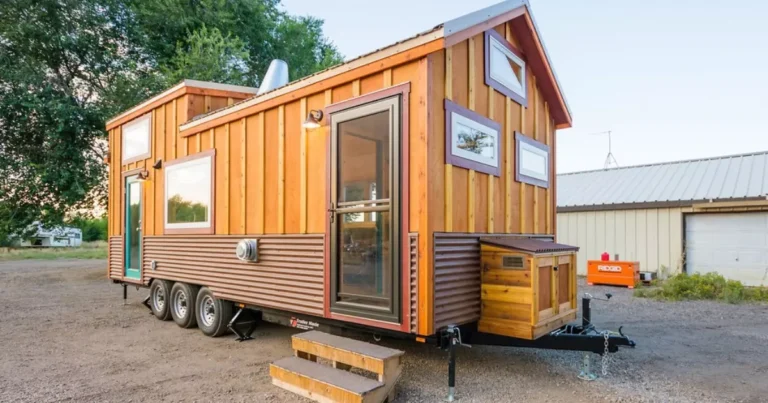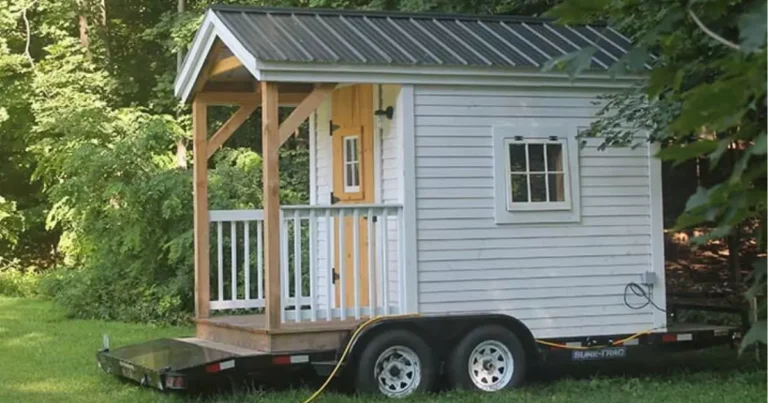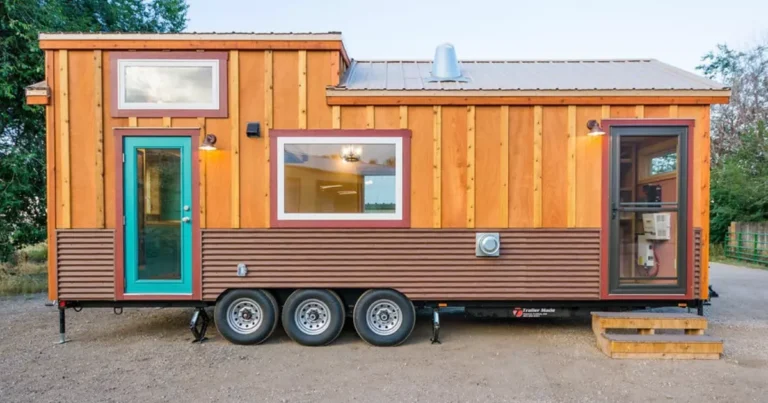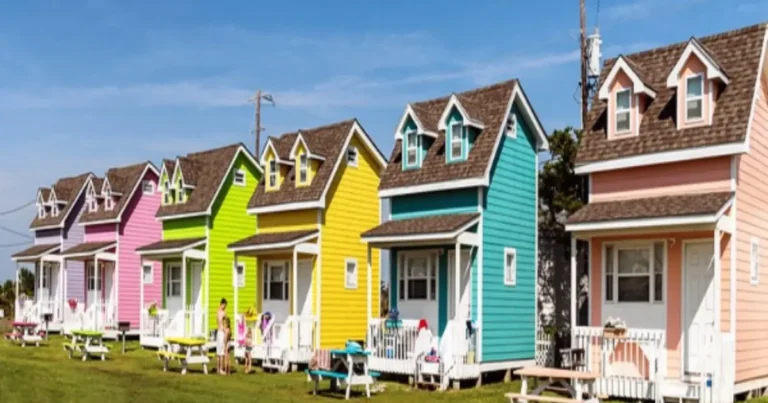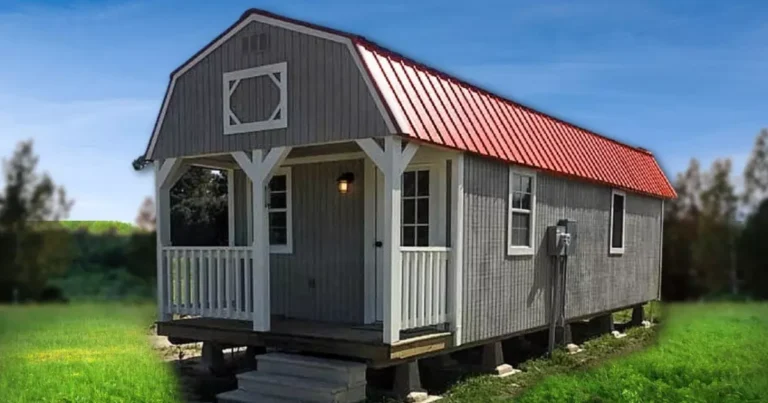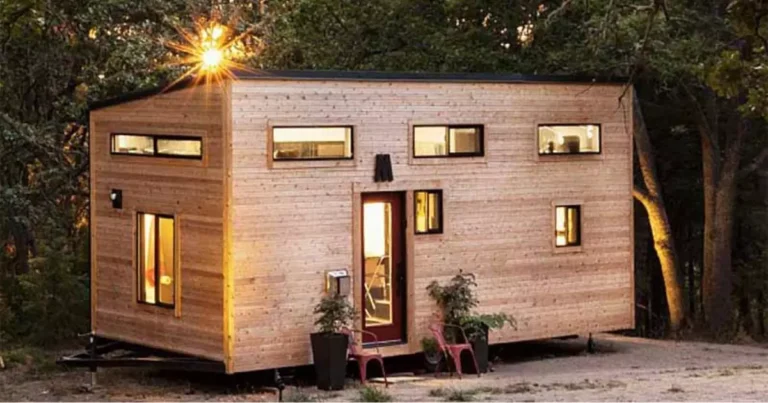How to Build a Tiny House with No Money? Creative Solutions
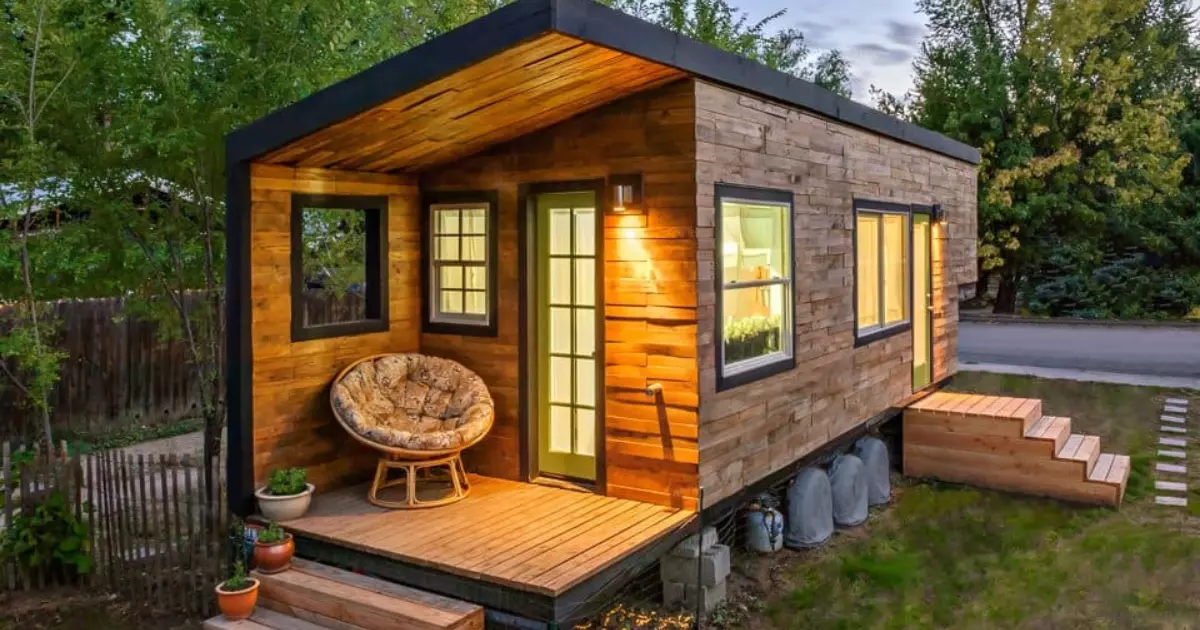
In a world where housing costs continue to rise, the idea of building a tiny house with little to no money might sound like a far-fetched dream. However, with the right approach and a touch of resourcefulness, it’s entirely possible to create your own cozy and affordable living space.
This article will guide you through the steps of building a tiny house without breaking the bank.
Building a tiny house with no money requires resourcefulness. Utilize reclaimed materials from construction sites, dumpster diving, or community sharing. Learn essential DIY skills through online tutorials and seek help from friends or local groups to minimize costs.
Understanding the Tiny House Movement
The tiny house movement advocates for downsizing and simplifying living spaces to focus on what truly matters. By embracing minimalism, individuals can build and own their homes without becoming trapped in the cycle of mortgage payments.
Setting Your Budget to Zero: Is It Really Possible?
While building a house without any expenses at all is challenging, minimizing costs is achievable. By tapping into free resources and repurposing materials, you can significantly reduce your expenses.
Scouting for Free or Low-Cost Building Materials
One person’s trash can be another’s treasure. Look for discarded materials at construction sites, recycling centers, or online platforms where people give away items for free.
Utilizing Salvaged Items for Construction
Old doors, windows, and hardware can find new life in your tiny house. Salvaging materials not only saves money but also adds unique character to your home.
Embracing Minimalist Design Principles
Tiny houses demand smart design. Prioritize multi-functional furniture and efficient layouts to make the most of your limited space.
DIY Techniques: Learning New Skills for Construction
Instead of hiring expensive labor, acquire basic DIY skills. Online tutorials and community workshops can teach you how to frame, wire, and plumb your tiny house.
Community Collaboration: Bartering for Help
Join local building groups where members exchange skills and labor. Bartering your expertise can save you money and help foster a sense of community.
Creative Financing: Crowdfunding and Sponsorships
Consider crowdfunding platforms to raise money for essential expenses. Your project might resonate with others looking to support innovative housing solutions.
Choosing the Right Location for Your Tiny House
Finding a suitable place to park your tiny house is crucial. Explore options like urban backyards, rural land-sharing, or mobile tiny house communities.
Navigating Legalities and Building Codes
Research zoning regulations and building codes in your area. Some places are more accommodating to alternative housing options than others.
Off-Grid Living: Generating Your Own Resources
Reduce utility bills by investing in solar panels, composting toilets, and rainwater harvesting systems. These investments pay off in the long run.
Smart Furniture and Storage Solutions for Tiny Living
Maximize space by choosing furniture with built-in storage. Foldable, stackable, and adaptable pieces can make your tiny house functional and comfortable.
Harnessing Solar Energy on a Shoestring Budget
Solar energy is a cost-effective way to power your tiny home. Start small with a solar kit and gradually expand your system as your budget allows.
Rainwater Harvesting Systems: Sustainable Water Source
Collecting rainwater reduces your dependence on traditional water sources. Set up a simple rainwater harvesting system to meet your water needs.
Emotional Freedom: Living Clutter-Free and Debt-Free
Owning a tiny house promotes a debt-free and clutter-free lifestyle. Experience the liberation of having fewer possessions and more financial flexibility.
Cheapest Way to Build a Tiny House on a Budget
Building a tiny house on a budget requires careful planning, resourcefulness, and efficient use of materials. Here are the steps to help you achieve this:
1. Research and Planning:
- Research local regulations and zoning laws for tiny houses in your area. Make sure you’re allowed to build one on your chosen property.
- Determine your budget and set realistic expectations. Decide on the size and layout of your tiny house.
2. Design:
- Keep the design simple and functional to minimize costs. A rectangular or square shape with a single-pitched roof can be more affordable than complex designs.
- Optimize the use of space by including multi-purpose furniture and storage solutions.
3. Salvage and Recycle:
- Look for salvage yards, recycling centers, or online platforms where you can find reclaimed building materials like doors, windows, flooring, and more.
- Reusing materials can significantly reduce costs while also contributing to sustainability.
4. Sourcing Materials:
- Purchase materials in bulk or during sales to save money.
- Consider using standard dimensions for materials to minimize waste and costs.
5. Foundation:
- Choose a foundation option that suits your budget. Piers, concrete blocks, or even a trailer base can be cost-effective alternatives to a traditional concrete foundation.
6. Framing:
- Use lightweight and affordable materials like wood for framing.
- Opt for simple construction techniques that require fewer cuts and joints.
7. Insulation:
- Insulate your tiny house properly to ensure energy efficiency. You can use cost-effective insulation materials like fiberglass or rigid foam panels.
8. Exterior:
- Choose low-maintenance and affordable siding options such as plywood, metal panels, or vinyl siding.
- Consider painting or staining the exterior yourself to save on labor costs.
9. Roofing:
- Select an affordable roofing material like asphalt shingles. They are cost-effective and easy to install.
10. Interior Finishes:
- Use creative interior finishes like pallet wood, salvaged materials, or economical wall panels.
- Opt for affordable flooring options like laminate, vinyl, or even sealed plywood.
11. Plumbing and Electrical:
- Keep plumbing and electrical systems simple to reduce costs. Utilize basic fixtures and avoid complicated layouts.
- Hire licensed professionals for the electrical and plumbing work to ensure safety and compliance with codes.
12. DIY Approach:
- Whenever possible, perform tasks that you’re capable of handling yourself, like painting, insulation, and interior finishes.
- Enlist the help of friends or family members who have relevant skills to contribute.
13. Minimize Customization:
- Limit custom-built elements as they can increase costs. Stick to standard sizes for cabinets, countertops, and other fixtures.
14. Energy Efficiency:
- Incorporate energy-efficient features like LED lighting, proper insulation, and well-sealed windows and doors to save on long-term utility costs.
15. Final Touches:
- Focus on details that enhance the aesthetics of your tiny house, such as affordable decorations and clever storage solutions.
16. Regular Maintenance:
- Keep up with maintenance to prevent costly repairs down the line.
Remember that building a tiny house on a budget requires trade-offs and careful decision-making. By prioritizing cost-effective choices, salvaging materials, and embracing a DIY mindset, you can create a functional and charming tiny home without breaking the bank.
How to Build a Tiny House for $500
Building a tiny house for $500 is an extreme challenge due to the costs associated with even the most basic materials and necessities. However, if you’re determined to attempt it, here’s a simplified approach:
1. Free or Inexpensive Materials:
- Scour local classifieds, social media, and online platforms for free or heavily discounted building materials like pallets, reclaimed wood, old windows, and doors.
- Look for discarded items that can be repurposed, such as salvaging wood from shipping pallets.
2. Simplified Design:
- Opt for the most basic and minimalist design possible to minimize costs.
- A single-room structure with an open layout is the simplest choice.
3. Foundation:
- Consider building on a trailer base, as it might be one of the most affordable foundation options.
- Look for used trailers that can be repurposed for your tiny house.
4. Salvage Building Techniques:
- Learn basic building techniques and use salvaged materials to construct the walls, roof, and floor.
5. No Utilities:
- Forgo plumbing and electricity to save money. This means no running water, plumbing fixtures, or electrical wiring.
6. DIY Labor:
- Do all the work yourself or enlist the help of friends or family who have construction skills.
7. Minimal Finishes:
- Avoid interior finishes and decorations to cut costs further.
8. Upcycled Furnishings:
- Use upcycled or repurposed items as furnishings, such as old crates as shelves and cinder blocks as makeshift tables.
9. Second-Hand Items:
- Look for second-hand furniture or items that can serve multiple purposes.
10. Extreme Minimalism:
- Embrace an extreme minimalist lifestyle with only the absolute essentials.
Remember, building a tiny house for $500 is an unprecedented challenge, and you might have to make significant sacrifices in terms of comfort, safety, and functionality. This budget is extremely limited and may not cover even the most basic needs adequately. It’s essential to prioritize safety and legality throughout the process, ensuring that your construction adheres to any local building codes and regulations.
Can You Build a Tiny House with No Experience?
Yes, you can build a tiny house with no prior experience, but it will require a lot of research, learning, patience, and careful planning. Here’s how to approach it:
1. Research and Education:
- Start by studying resources like books, online tutorials, videos, and forums that teach you about basic construction techniques, safety precautions, and tiny house design principles.
- Gain a basic understanding of tools, materials, and building terminology.
2. Start Small:
- Begin with a simpler project to build your skills and confidence before tackling a complete tiny house. You might consider building a small shed or a playhouse to practice construction techniques.
3. Seek Guidance:
- Enlist the help of friends, family members, or acquaintances with construction experience. Having someone with hands-on knowledge can be invaluable for guidance and troubleshooting.
4. Take Workshops or Classes:
- Look for local workshops or classes that teach basic carpentry and construction skills. These hands-on experiences can accelerate your learning curve.
5. Online Resources:
- There are numerous online tutorials and videos available that walk you through various construction tasks step by step. Platforms like YouTube and DIY websites can provide visual guidance.
6. Simplified Design:
- Choose a simple and straightforward design for your tiny house. This will help reduce the complexity of construction and minimize the chances of making costly mistakes.
7. Safety First:
- Prioritize safety at all times. Use proper safety gear, follow instructions carefully, and be cautious when using tools and equipment.
8. Take Your Time:
- Building a tiny house without experience will likely take longer than it would for someone with construction background. Don’t rush the process; take your time to ensure each step is done correctly.
9. Mistakes Are Part of Learning:
- Understand that mistakes will happen, especially as a beginner. View them as learning opportunities and chances to improve your skills.
10. Seek Professional Help When Needed:
- While you might want to tackle most of the project yourself, there are areas like electrical and plumbing work where professional help is crucial for safety and code compliance.
11. Adapt and Learn:
- As you progress through the construction process, you’ll gain more experience and confidence. Be open to adapting your plans based on what you learn along the way.
Building a tiny house with no experience is challenging but certainly achievable with dedication and a willingness to learn. Just remember to start small, gather knowledge, seek assistance when necessary, and prioritize safety throughout the entire process.
Tiny Home Ideas on a Budget
Here are some budget-friendly tiny home ideas to consider:
1. Minimalistic Design:
- Embrace a minimalistic approach to design, focusing on essential features and functional elements.
2. Open Space Layout:
- Opt for an open floor plan to maximize space utilization and create a sense of openness.
3. Loft Bed or Storage:
- Incorporate a loft area for a sleeping space, freeing up the ground floor for other functions or storage.
4. Multi-Functional Furniture:
- Invest in furniture that serves multiple purposes, such as a sofa bed, fold-down dining table, or storage ottomans.
5. Salvaged Materials:
- Use reclaimed wood, pallets, and salvaged items for building materials to save costs.
6. DIY Projects:
- Take on DIY projects for interior finishes, furniture, and decor to personalize your space while keeping expenses low.
7. Creative Storage Solutions:
- Utilize vertical space with shelves, hooks, and hanging storage to keep clutter to a minimum.
8. Energy Efficiency:
- Focus on energy-efficient appliances and lighting to reduce long-term utility costs.
9. Second-Hand Finds:
- Shop for second-hand furniture, appliances, and building materials from thrift stores, yard sales, or online platforms.
10. Simple Exterior Finishes:
- Choose low-cost siding options like plywood or metal panels for the exterior of your tiny home.
11. Natural Lighting:
- Maximize natural light by incorporating large windows and reflective surfaces to make the space feel larger and more inviting.
12. Compact Appliances:
- Select smaller, efficient appliances designed for small spaces to save both space and energy.
13. Outdoor Living Space:
- Create an outdoor area that extends your living space, with seating, a small garden, or a deck.
14. DIY Window Treatments:
- Make your own curtains or blinds using affordable materials like fabric remnants or bamboo shades.
15. Vertical Gardening:
- Incorporate vertical gardens using hanging planters or wall-mounted containers to add a touch of greenery.
16. Freestanding Partitions:
- Use freestanding dividers or screens to create separate zones within your tiny home without the need for costly construction.
17. Repurposed Decor:
- Decorate with repurposed or upcycled items like old suitcases as storage, vintage crates as shelves, or mason jars as light fixtures.
Remember, the key to creating a budget-friendly tiny home is to prioritize what truly matters to you and be resourceful in finding creative solutions. By combining your own creativity with some strategic planning, you can build a cozy and functional tiny home without breaking the bank.
FAQs
Is it really possible to build a tiny house without any expenses?
While building without any expenses is challenging, you can significantly reduce costs by utilizing free or salvaged materials.
How can I learn the necessary construction skills for building a tiny house?
Online tutorials and community workshops are excellent resources for learning basic construction skills.
Where can I park my tiny house legally?
Look for urban backyards, rural land-sharing opportunities, or mobile tiny house communities that allow for legal parking.
What are some off-grid options for utilities in a tiny house?
You can invest in solar panels for electricity and rainwater harvesting systems to collect water sustainably.
How does tiny house living affect one’s lifestyle?
Tiny house living promotes minimalism, emotional freedom, and a debt-free lifestyle by encouraging you to prioritize what truly matters.
Conclusion
Building a tiny house with no money requires ingenuity, dedication, and a willingness to learn. By embracing resourcefulness and adopting sustainable practices, you can create an affordable and comfortable living space that reflects your values. Take the first step towards a simpler and more fulfilling life by embarking on your tiny house journey.
